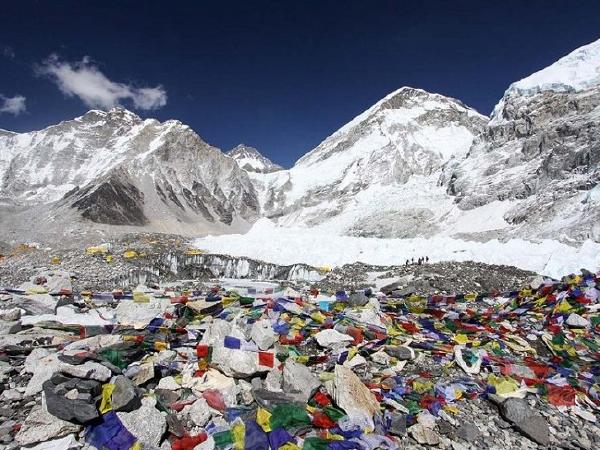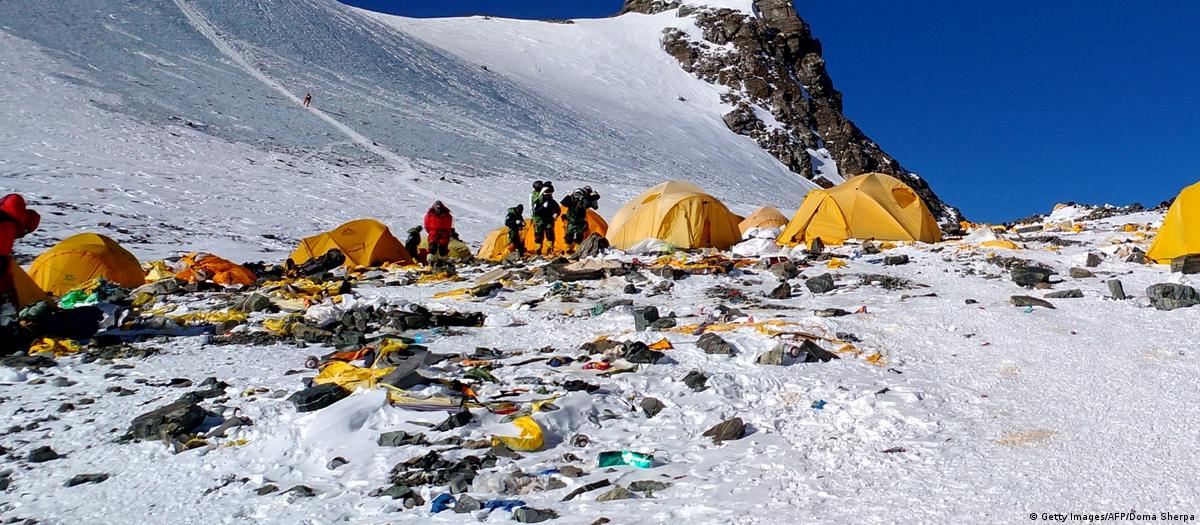
Photo by
: FREDDIE WILKINSON, National Geographic 
Rush on the Mountain during 2018 season
Expedition teams, both those attempting to reach Everest's summit and those who have already turned back, navigate a single, crowded path.PHOTO BY : Elia Saikaly
After the first Summit of 1953, mountaineers worldwide shifted their attention to Everest. During the 1990s, traffic on the world’s seven summits grew fast. But footfall on Everest multiplied astonishingly and to meet that demand, many commercial enterprises started guided ascents on all the seven peaks, especially Everest. But this huge traffic could create serious problems in terms of safety and its impact on the environment in the Everest region. So, the government of Nepal came up with a solution.
In 1991, the Ministry of Tourism was charging $2,300 for a permit which allowed a team of any size to ascent Everest. However, in 1992, the government increased the fees to $10,000 for a team of nine climbers and $1,200 to be paid for each additional climber. With this decision, the government kept its promise of limiting the crowds on the mountain and also started adding additional revenue to the state’s exchequer.
Despite the higher fees, climbers continued to throng the Everest. In 1993, fifteen expeditions, comprising 294 climbers, attempted to summit the mountain from the Nepal side. Seeing this traffic, the government raised the permit fees again to $50,000 for a team of five climbers and $10,000 for each additional climber. Besides, the ministry capped the limit on the number of mountaineers in a team to seven. The government also ordered that only four expeditions would be allowed each season.
The tourism industry didn’t take into consideration the fact that China was charging only $15,000 for a team of any size to climb Everest from the Tibetan side. Also, there was no limitation on the number of expeditions in each season. Therefore, the mountaineers shifted their attention to Tibet, leaving hundreds of sherpas out of work. In the spring of 1996, Nepal, suddenly removed the four limit of four-expeditions each season. The permit fees once again lifted to a whooping high – $70,000, for up to seven climbers plus $10,000 for every additional climber. It was because, in the last season in 1995, a total of thirty expeditions had attempted Everest out of which sixteen had attempted the mountain from the Nepal side. So the government was of the view that high cost of obtaining the permit doesn’t seem to have been a great hindrance and the ministry increased the fees.
The commercialisation attracted many critics. Also, in 1980s, the proliferation of the commercial expeditions was a touching issue. Traditionalists were offended at large that the world’s highest summit was being sold to the rich. Many said that Everest had been debased and disrepected.
Even though commercialization had negative environmental effects in the Everest region, where uncontrolled waste, garbage, and human excreta high on the mountain were the costs of increasing traffic, it eventually became a trend and more important, also a significant source of hard currency to the national coffers of impoverished state. Nepal’s tourism industry expanded at an astounding rate. Thousands of underprivileged people now have a way to support themselves.

Trash on the Everest base campMany people receive employment from an Everest expedition. The establishment of route high on the mountain requires sherpas, as do the hiring of porters to carry the luggage, the provision of cooks during the expedition, the opening of tea houses along the way and many other people, passively related to the tourism industry.
The government of Nepal has taken numerous measures to manage the waste on and around the mountain. In the same way that charging a security deposit for each permit require the mountaineers to bring all of their trash in order to receive a refund. Additionally, a number of NGOs work to clean the mountain, to lessen the region’s exposure to unchecked garbage. However, the government still need to take more steps in order to achieve the aim of sustainable commercialization of mountaineering.

Image: Getty Images/AFP/Doma Sherpa

Leave a comment